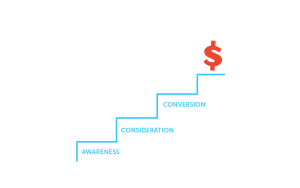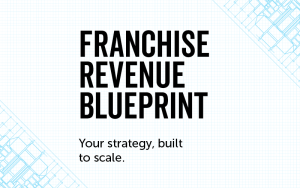Highlights:
- Customer journey attribution assigns credit across all customer journey stages—awareness, consideration, and conversion—to reveal how each touchpoint contributes to results.
- Single-touch attribution models like last-click or first-click overlook early-stage awareness efforts and offline conversions, leading to inaccurate ROI reporting.
- Multi-touch attribution models such as linear, time decay, and position-based provide a clearer picture of how multiple interactions influence the final decision.
- Tracking attribution at both national and local levels helps multi-location brands connect corporate and franchise efforts into one cohesive, data-backed strategy.
- Attribution modeling validates top-of-funnel spend, improves creative optimization, and clarifies which marketing activities assist conversions rather than just close them.
- Teams that credit every stage of the journey gain actionable insights, align sales and marketing goals, and build smarter strategies that reflect real customer behavior.
[Revamped for 2025]
In the good old days (read: 2008), “tracking a conversion” meant watching someone click your Google ad and buy something. Simple. Clean. Satisfying.
Fast forward to today, it’s like watching your dog go after a squirrel in the yard. Your potential customer might see your YouTube ad, check out your brand on Instagram, get retargeted with a promo, and ignore it. Then they receive a postcard, click a PPC ad that takes them to a local landing page, and then finally show up at your store to make a purchase. Now, which touchpoint gets the credit?
Spoiler: if you’re only using last-click attribution, it’s probably the PPC ad. And that’s only telling part of the story.
Welcome to the World of Multi-Touch Attribution
It’s where understanding the full customer experience journey—from awareness to conversion—is not just helpful; it’s mission-critical for multi-location marketers.
This article breaks down how attribution modeling can help you allocate credit correctly and see which efforts are truly converting customers.
The Rising Importance of Multi-Touch Attribution
Let’s start with the “why.” In an era of tighter budgets, C-suite scrutiny, and increasing pressure to show ROI, attribution modeling is how marketing teams defend their spend.
If you’re part of a franchise or multi-location brand, your pain points multiply: your campaigns are running on multiple channels, in multiple markets, sometimes with multiple goals (local awareness, store traffic, online sales, etc.). Without attribution, you’re stuck guessing which touchpoints actually drove results and which were just background noise.
Attribution modeling helps you untangle the mess. It clarifies what’s working, what’s assisting, and what’s wasting your budget. Let’s travel the customer experience journey and see how that plays out in real time.
The Three Stages of the Customer Journey
Every buyer moves through a series of stages on the way to a decision, and each stage plays a different role in driving the outcome. Think of the customer journey stages like a relay race. No single runner wins on their own—it’s the handoffs that matter.
- Awareness
This is where your brand first appears on the consumer’s radar. You’re not asking for the sale—you’re just introducing yourself and building brand awareness. Your goal here is to create brand awareness and associate your brand with the solutions they need or may need in the future. This is generally the stage with the highest CPA (cost per acquisition or conversion) and lowest conversion rate, but it plays a key role in the nurturing of potential customers.
Tactics: Display Ads, Video Ads, Social Media
KPIs: Impressions, Reach, Engagement
Example: A national home services brand runs a video campaign on YouTube targeting DIY homeowners. - Consideration
At this point in the customer journey stages, your audience is poking around, researching, and comparing options. They’re open to persuasion but not quite sold. Here you’re focused on getting prospects to the site or landing page and providing them with the information they need to move towards conversion.
Tactics: Paid Search, Soft Remarketing, Display Ads with Increased Targeting or Retargeting
KPIs: Clicks, CTR, Impression Share, Page Views
Example: The same homeowner clicks a Google Search ad for “affordable roofing near me” and lands on a store-specific landing page. - Conversion
The decision has been made (or nearly). Now it’s about making it easy to buy, book, or visit. Make it clear what, how, why, and when they can get your fantastic product.
Tactics: Promotions, Email Offers, QR Codes on Direct Mail
KPIs: Conversions, Conversion Rate, CPA, Store Visits
Example: The customer sees an email that leads them to a local landing page offering 15% off if they visit the store this weekend—and shows up to redeem it.
In a multi-location setup, that national-to-local journey is your sweet spot. But without attribution modeling along the customer journey stages, you’re blind to how each piece contributes. Here’s how customer journey attribution works (or doesn’t).
Related: Top Trending Lead Funnel Strategies
Where Traditional Attribution Falls Short
Let’s be honest: last-click attribution is the marketing equivalent of giving all the credit for a basketball game win to the athlete who scored last, even when the spread was eight points.
Traditional models fail multi-location teams in three big ways:
- They ignore early-stage effort: Your video ad may have introduced the brand, but it gets zero credit when the final conversion comes from a QR code.
- They credit the wrong hero: If someone saw five ads, visited your website, and converted after clicking a retargeted email, was it really the email that closed the deal? You’re missing the importance of the awareness-builders and consideration drivers.
- They lose offline conversion visibility: For brands with brick-and-mortar locations, in-store purchases often vanish from the tracking radar unless you’re merging CRM and POS data smartly.
Types of Multi-Touch Attribution Models (and When to Use Them)
Here’s your decoder ring for the most common customer journey attribution models:
- Last Click: Easy but misses the full story. OK for very bottom-funnel tactics.
- First Click: Great for brand awareness campaigns but doesn’t credit conversion-driving touchpoints.
- Linear: Distributes credit equally across all touchpoints. A good start but not always nuanced enough.
- Time Decay: Gives more weight to recent interactions. Helpful for long journeys or high-ticket sales.
- Position-Based (U-Shaped): Balances first and last clicks and shares the rest in between. Ideal for showing impact across the customer journey stages.
Tip: Centralized marketing teams might prefer Position-Based or Time Decay for more complicated national efforts, while local marketers benefit from Last Click or First Click for quick campaigns.
Example: Customer Journey Attribution in Action
Let’s say you’re a multi-location fitness brand.
- A prospect sees a national display ad on a wellness website.
- Later, they get remarketed on Instagram with before-and-after stories from local clients.
- A week goes by, and they receive a mailer with a personalized QR code for a free trial class.
- They scan the QR code and show up to their neighborhood gym.
In a last-click model, the mailer gets all the glory. But multi-touch attribution shows your display ad and Instagram were essential in building interest. Without them, the QR code might’ve gone straight to the recycling bin. You can see how all teammates contributed to the win.
Related: 8 Ways to Master the Multi-Channel Marketing Mix
Closing the Loop with Attribution Modeling
Attribution isn’t just about proving what worked—it’s about revealing how your strategy worked.
With the right models in place, you can:
- Improve creative in early-stage channels by identifying what’s driving awareness.
- Justify top-of-funnel spend, which often gets cut because it “doesn’t convert.”
- Connect national and local marketing efforts into one cohesive, data-backed narrative.
When you stop chasing conversions in isolation and start crediting every player in the journey, your insights become actionable—and your strategy unstoppable.
Final Takeaway: Think Like a Team, Not a Channel
Attribution modeling isn’t about declaring a single winner. It’s about understanding the team effort behind every conversion along the customer journey stages, and building a strategy that reflects how real customers think.
In multi-location marketing, this mindset is even more powerful. It encourages franchisees and corporate teams to work together, optimizing every touchpoint instead of fighting over who gets credit.
At Ironmark we help multi-location marketers build smart, scalable attribution models that track multi-channel strategies across markets, teams, and tactics. And we can help you do the same.
Let’s give credit where credit is due—and finally see the full customer experience journey. Ready to map it out? Let’s go.



